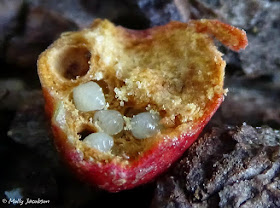Urban plantings frequently include non-native plants that may not provide nectar for our native species of bees, butterflies and moths. They usually can't serve as host plants needed for food for native caterpillars. This also creates a food shortage for birds. We encourage homeowners to "Bee Wise and Plant Natives."
Our Master Naturalist chapter is participating in the Native Plant Market at the Springfield Botanical Center on May1st from 9:00AM to 2PM. (The plants can be selected on site and pre-orders from Ozark Soul and Smiling Sun Gardens are also welcome.) Our chapter's focus will be on invasive ornamental plants that are harming Missouri's wild and urban ecosystems and the wisdom of replacing them with our natives.
There's a wealth of reliable resources on the internet to help the curious (as well as the obsessed) when it's time to chose ornamental plants for our yards and public spaces. Perhaps the first question we should ask when making decisions about plants is "Is it a known invasive or known to have invasive tendencies?"
- Grow Native! is Missouri's best resource for all things relating to native plants, including advice for beginners as well as the experienced, pollinator and wildlife habitat, water protection, and local resources.
- For information about invasive plants in general, their environmental impacts, and specific plants that are known to be invasive in our area check out Missouri Botanical Garden Invasive Species.
- Missouri Botanical Garden has a Native Landscaping Manual in PDF form. Chapter Four is an excellent guide for gardeners wanting to landscape with native plants.
- If you want information about control and identification of invasive species link to Chapter Three.
- To learn more about common invasive ornamental plants, how to identify and control them see this Missouri Department of Conservation (MDC) link.
- Native Plant Finder has information matching lepidoptera with plants.
- The Invasive Plant Atlas of the US has lists of plants that have invaded and degraded natural areas throughout the US.
Also remember Missourians for Monarchs.





















